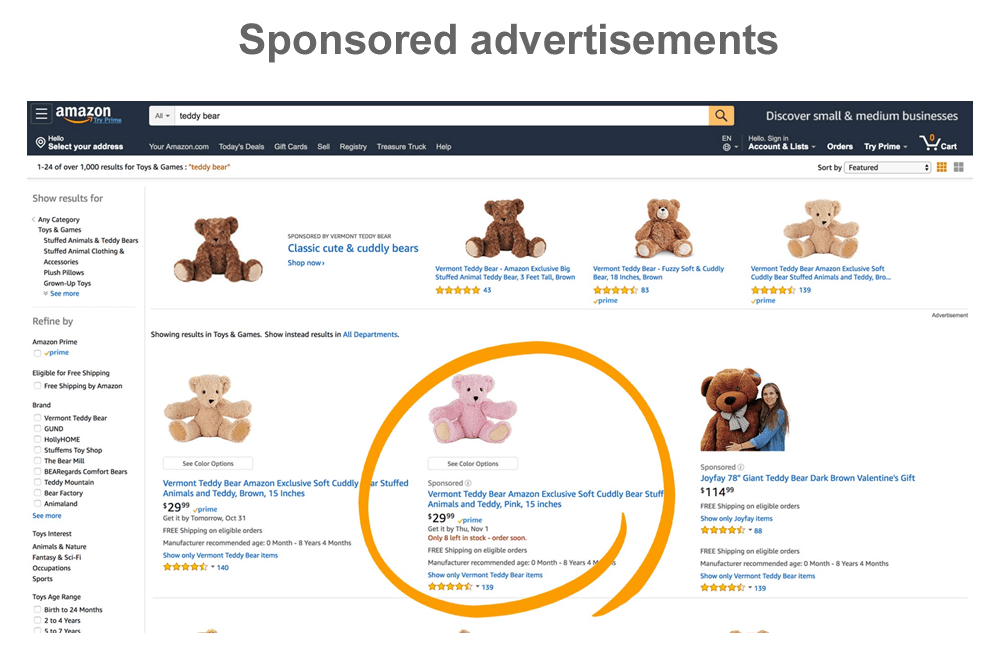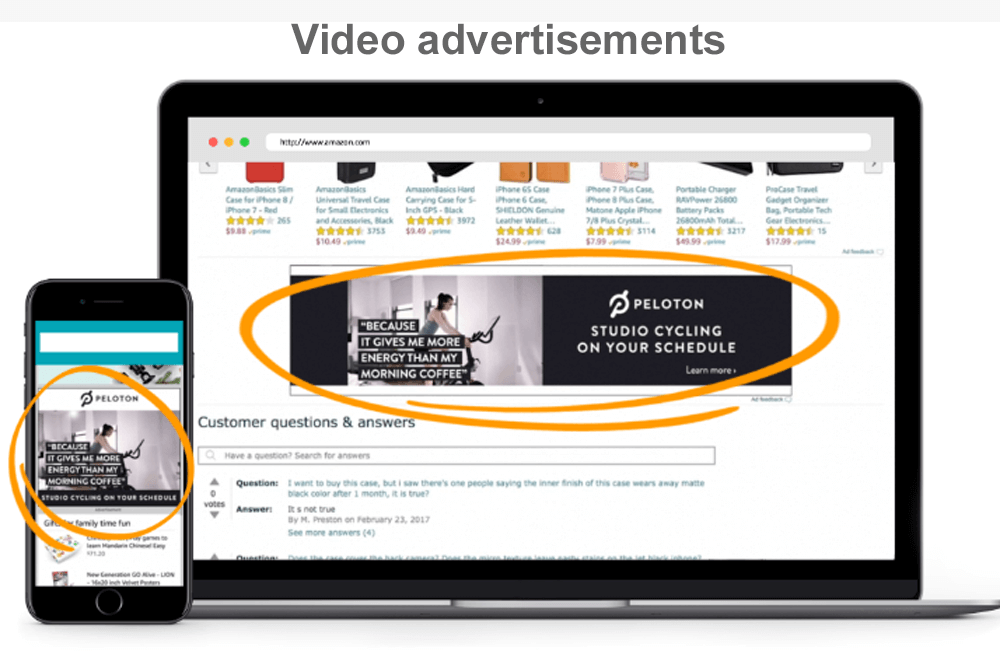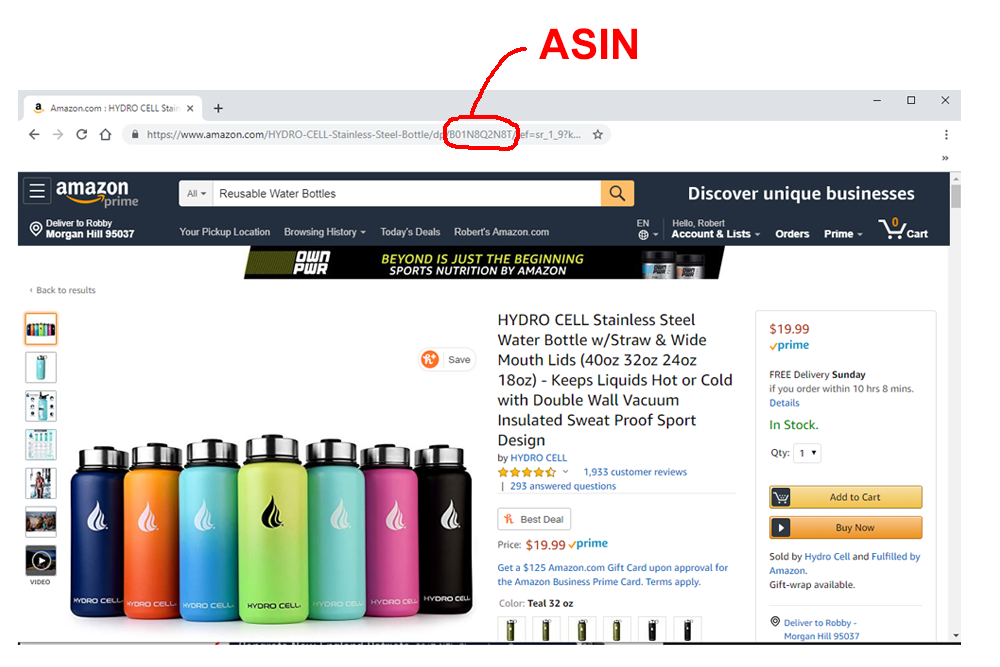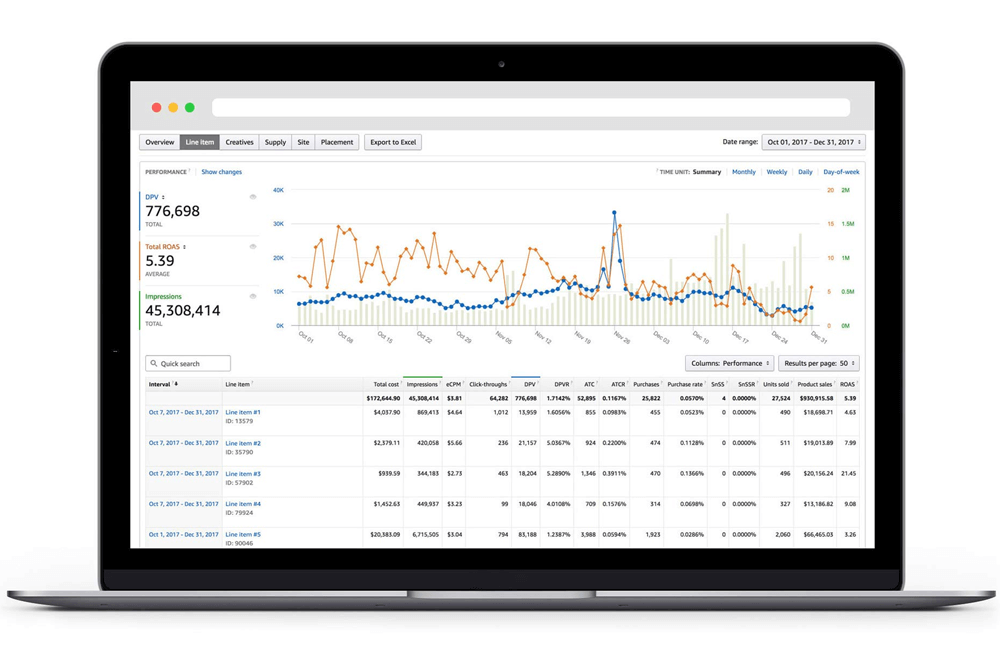
Guest Post from Seller’s Choice
Advertising on Amazon is a marketing strategy that yields very successful and impressive results when it is implemented appropriately. In order to utilize Amazon advertising for success, it is important to first understand what the tool entails, as well as how advertisements assist in driving traffic, increasing visits to your product pages, and ultimately improving sales.
Advertising on Amazon is an invaluable way of presenting your products to shoppers on the platform. Amazon advertisements are very similar to Google ads, as well as social media advertising. The main difference between Amazon advertising and other forms of online advertisements is the sole fact that Amazon ads are displayed on Amazon. You pay the platform to place advertisements on the site, and you have some options when it comes to how the ads are formatted.
There are three different types of ads that Amazon offers as part of its advertising campaigns. These three options of presenting your Amazon ads to an audience are…
1. Sponsored advertisements
2. Display advertisements
3. Video advertisements



Deciding on the presentation of your Amazon ads is an important step, but before you think about the type of advertisements you have Amazon run for your business, you should first think about how to structure your Amazon ads. Having an Amazon Advertising account is great for your business, but if your advertising campaign is not thoroughly thought-out and designed for success, investing your time, money, and energy into advertisements will not yield the results that you want. Follow these four steps when structuring your Amazon Advertising account for success…
1. Categorize your inventory of products according to individual ASINs
2. Choose which ASINs to target within each category of products
3. Build and execute the campaigns you’ve designed around the selected ASINs
4. Begin the process of reporting on your campaign performance findings
1. Categorize Your Inventory of Products According to Individual Amazon Standard Identification Numbers
An advertising campaign that involves Amazon ads requires a lot of organization on the back-end in terms of your company’s inventory. Before you do anything else, we suggest that you categorize your items based on their Amazon Standard Identification Numbers or ASINs for short. Amazon Standard Identification Numbers are barcodes that are assigned to items whenever they are listed for purchase on Amazon.

Similar to an ISBN that you find on books after publication, Amazon Standard Identification Numbers each contain a segment of ten characters, which tends to be a combination of numbers and letters. In fact, an ASIN is the same as an ISBN for books listed on Amazon. The purpose of an ASIN is to identify a product and make searches more direct for customers who are looking for one specific item in particular. Knowing the ASIN of a product on Amazon means that buyers can input the ten-character sequence into the search bar on Amazon, and just like that, the one item they are in search of appears on the screen.
However, you don’t want to have your items categorized by ASINs. You want to have product categories that the ASINs fall into, such as a product category titled “Reusable Water Bottles.” Using this example, each ASIN that references a reusable water bottle that you sell will fall into the product category of “Reusable Water Bottles.” This way, you have one category that contains ASINs for all reusable water bottles, rather than having a plethora of ASINs for similar items that are not grouped together. To aid with this, it is valuable to have your listing optimized.
Once you create groups for the sake of categorizing your online listings on Amazon, you will have an inventory that feels more manageable, organized, and easy to sort. Categorizing the ASINs of your products allows for an advertising campaign that has structure, as opposed to one that tries to advertise all products individually instead of by category. The latter example of Amazon advertising makes it harder to report on how well your campaign is performing because there are too many variables at play. By focusing on variations of the same item, you save time and resources.
2. Choose Which ASINs to Target Within Each Category of Products
Once all of the ASINs are up-to-date and you have created categories for all of the ASINs in your company’s inventory, it is time to zero in on the products you want to target with Amazon advertisements. Within each product category, you should select a few ASINs in particular that you want to target for your Amazon advertisements. Going back to the example of reusable water bottles, let’s say you have thirty different options within that one product category. Trying to target all thirty reusable water bottles will be less effective than selecting anywhere between five to ten ASINs.
If you only target a small number of ASINs, such as two ASINs, then you will unintentionally place a limitation on your ad campaign. Targeting too many ASINs at one time is also not recommended because this becomes overwhelming when you get into the reporting state of Amazon Advertising, so the best range to stick with is between five and ten ASINs per product category. The Amazon Standard Identification Numbers you choose to target should definitely represent the products that have excellent reviews, a decent number of sales already, and the potential to become a best-selling item, if it is not already.
3. Build and Execute the Campaigns You’ve Designed Around the Selected ASINs
After categorizing and selecting ASINs for which your advertising campaign will target, it is now time to embark on the build-out process of your ad campaign on Amazon. At this point, the focus should be on making your products visible to online shoppers. Within each product category, you will want to include keywords that apply to the product itself, as well as keywords that are linked to your brand’s name.
This way, there will be a greater chance that your items will appear as part of the search results for people who are unfamiliar with your brand but know which product they want, as well as those who might know of your brand already but are searching for a different product that you sell.
The third part of building and executing your advertising campaign is to align your branded products with similar products offered by other sellers. In doing so, the ASINs that you have targeted for are going to show up as a result of a search that someone made for another company. Since your business is very similar to the company the person had in mind, and since you have aligned your brand with the one being searched for, you will appear among competitors and potentially convert that view into a purchase.
4. Begin the Process of Reporting on Your Campaign Performance Findings
Amazon Advertising is an important addition to your list of digital marketing strategies, but if you do not follow through with the final step of reporting the trends of your Amazon ads, the advertising campaign will not be as profitable or informative as it has the potential to be. After you have built-out your advertising campaign, you will want to keep a close eye on everything that results from there. As part of an Amazon Advertising account, users are provided with total access to a dashboard that details performance data regarding the ads for your products.

Amazon allows you to track your store’s performance– but we recommend you keep a personal log as well! From there, you can analyze, deduce, and decide how to improve upon your advertising campaign as you wish. Looking for some help when it comes to paid advertising? Check out Seller’s Choice!
Amazon Advertising requires that you play more of a role in the campaign than pay-per-click ads or social media advertisements require of you, but in the long-run, Amazon Advertising itself is a key to success. If you ever find that tackling an advertising campaign on Amazon is more than your company can monitor on its own, consider looking into software that is specifically designed to help businesses manage their Amazon sales more efficiently.

0 Comments